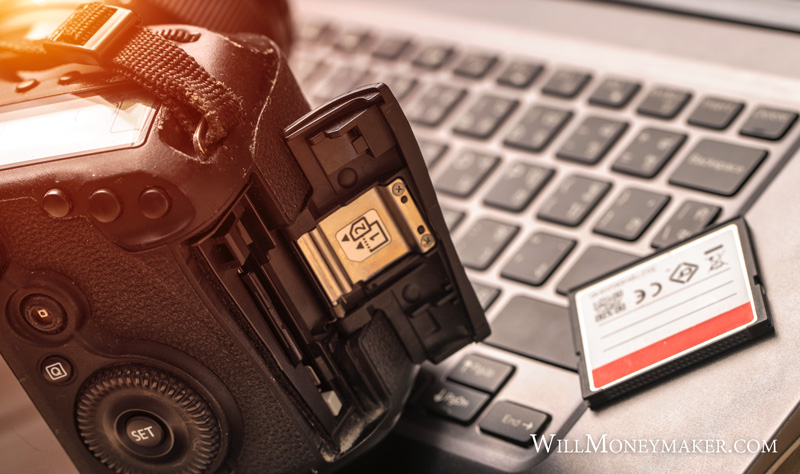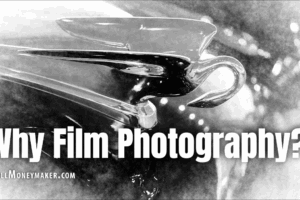I can remember a time when digital photography was a new frontier, one that excited many and made many others skeptical. Over the years, we’ve come to take this medium for granted. It is a modern convenience, much like computers, smartphones, and all the rest of the technology we now surround ourselves with.
With a digital camera, we can take an endless amount of photos, never worrying about developing rolls of film. We can see those photos as we take them and we can even edit them immediately — no hours spent in the darkroom producing negatives that we will later print. In fact, the negative itself has been replaced by the RAW file, which means that we no longer hold small strips of film up to a lightbox, eyeing them with magnifiers as best we can to see which we’d like to print. Now, we can view our RAWs in sizes as large as our monitors — or larger.
But I digress. As much as digital photography has improved our efficiency through convenience, I would also like to argue that digital photography has improved art on the whole. Many of these improvements exist because of the convenience of the digital SLR. Let me explain by way of a few examples of how I think digital photography has helped improve artistry in general.
The Sheer Number of Photos We Take Helps Us Improve Our Art
It sounds strange to say, especially these days when we are bombarded with hundreds of snapshots from all over the world each and every day but the sheer volume of photographs that we can take does help us to improve our art, I think. If you shot film, then think back on those days. It was incredibly hard to get that perfect shot, that one shot where everything in the frame is exactly how you envisioned it to be. Why was this? Because you were limited by however many rolls of film that you could carry with you or that you could afford to buy. The number of rolls of film that you had the time or money to process was another limitation.
Today, however, there is no such limitation. For most DSLRs, you can stop at any drug store and pick up enough storage for a few dollars that you can take hundreds or even thousands of photos at a stretch. In other words, the digital revolution means that you can stay on-location and take all of the photographs you want until you finally do get that precise perfect shot. Even if you do run out of space on your memory cards, you can always delete some of the images! Though, if you are like me, you’ll always have more than enough memory cards on hand to take photos all day long.
Photography is Unpredictable
Think of all the times you inadvertently bumped your polarizer right as you took a photo. Or maybe you’re trying an odd filter that has unpredictable effects. Your graduated neutral density filter is askew. You shift ever so slightly as you take a photograph with an extremely narrow depth of field and now the focused part of the image is off. You set the shutter to bulb and walk away but whoops! You accidentally kick the tripod as you move and now you have to start over.
In the film days, some of these issues were the photographer’s worst nightmare. Many of these problems you wouldn’t even know about until you were standing in the darkroom looking at freshly developed negatives. Even if you were aware of the issue, again, you were limited by the film that you brought with you. Simply taking the photo again was not so easy as it is now. And there was no such thing as a live view, which allows you to go back and confirm whether or not you bumped that polarizer or kicked that tripod. No, in the era of film, by the time you learned of your mistake, you had already developed the images and it was too late to retake them. Our art is improved by our ability to correct mistakes on-location, both through the number of retakes we can make and the live views that help us spot the mistakes in the first place.
Modern Post Processing Options are Endless
Today, there is so, so much more that we can do with images than ever before. With tools like Photoshop, essentially, if you can imagine it, you can create it. Even if you don’t quite know how to do a particular technique, the tutorial is rarely more than a Google search away. Compared to the days of film, this is a huge advancement for art. In the darkroom, you were limited by complex processes and chemistry, things that required extensive knowledge — without the benefit of online tutorials, no less — in order to perfect.
Digital Photography Gives Us a New Appreciation for Film
One of the most unique ways in which art is enriched by the digital revolution is our newfound appreciation for film. Whereas before, the various inconveniences of the medium were simply day-to-day issues that photographers needed to deal with, now, sometimes we revisit film because we want to take photographs using a camera that has a minor light leak. Or, we want the look of real film grain and not grain added in Photoshop. We want the special tones, colors, faults, and other uniqueness that comes with film.
In fact, that is the reason why film will never go by the wayside completely. Of course, digital cameras are the standard now, with nearly all photographers making use of them. But there is something special and unique about a film photograph that cannot be replicated. Now that we look back on the days of film fondly, we better appreciate that special quality. And that appreciation leads to improvements in the entire photographic sphere, both among digital users and film aficionados. It isn’t always all about convenience but about improving your skills and working to improve art in general.





